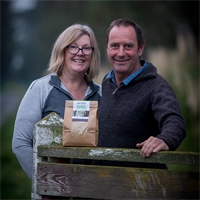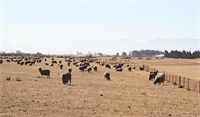10Apr
Protect your farm from fire
Research shows that certain types of plants can help protect properties from being destroyed by fire. And several New Zealand farms are now directly benefiting from these findings.
Lincoln University ecology lecturer Tim Curran and postdoctoral researcher Sarah Wyse, along with Professor George Perry of the University of Auckland, measured the shoot flammability of almost 200 plants as part of a study on the burning ability of various species.
“The plants we measured ranged from species such as poroporo, which did not ignite in any of our tests, through to plants like snow tussock and ponderosa pine, which burned for a long time and at high temperatures,” says Dr Curran.
The research findings are being applied to several different farms as part of a wider farming and nature conservation project, co-led by Associate Professor Hannah Buckley, of the Auckland University of Technology, and Professor David Norton, of the University of Canterbury.
“By measuring the flammability of common plant species on a range of farms, we are documenting fire hazards on these properties,” says Dr Curran.
“We can then use this information to see how changes in vegetation management might alter fire hazard. For instance, we can assess how the establishment of a shelterbelt of low flammability native species might provide a valuable ecosystem service to a farm.”
Shoot flammability is assessed on a device that the team affectionately refers to as their plant barbecue, which allows for standard measurements across species.
Highly flammable plants include gorse, marram grass, silver beech, kanuka, rimu, eucalyptus, and manuka. Common low flammability species are Coprosma repens, lowland ribbonwood, five finger, kohekohe, karaka, marbleleaf, wineberry, mahoe, Lombardy poplar, ngaio, tree fuchsia and broadleaf.
The latter can be used to plant green firebreaks to halt fire spread.
“Green firebreaks are strips of low flammability species planted at strategic locations across the landscape to reduce fire spread by extinguishing embers and the fire front, and also by blocking radiant heat,” says Dr Curran.
“Green firebreaks have been widely used throughout the world for fire mitigation, particularly in China which has planted 364,000 km of them.”
Fire and Emergency New Zealand maintains a list of plant species that are rated according to their flammability. See https://fireandemergency.nz/at-home/flammability-of-plant-species/).
For early research by Lincoln University and the University of Auckland on shoot flammability of New Zealand species, visit http://www.publish.csiro.au/wf/wf15047.
Related

A penchant for trying new crops coupled with a need to find a viable alternative to growing traditio...
Read More

The summer survivor’s guide for ryegrass pastures.
Read More

Fantastic camaraderie, lots of deals being done, and great attendance rates were a winning formula f...
Read More

Stovetop potpourri is a delightful and easy way to fill your home with inviting scents. It involves ...
Read More

Helping cardholders maximise farm profits by getting the best deals possible has been helped by Rura...
Read More

This year’s Instore Days was an incredible success. Our hybrid event held on 1 and 2 July offe...
Read More